At 5:30 am we’ve luckily caught the rising sun over Panjiakou Great Wall, and we are back to our farmhouse at the foot of Panjiakou Great Wall. The distant water area on the right side of the farmhouse, you are still able to see the Great Wall submerged in water, the underwater great wall pass (Panjiakou Great Wall Pass ) which are viewed much clearly during the dry season.
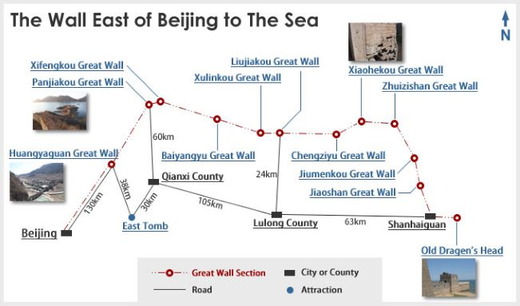
Not far from and to the east of Panjiakou Great Wall Pass is another famous great wall pass, Xifengkou Great Wall Pass which is also submerged in the reservoir. After breakfast, we’ll explore Xifengkou Great Wall.
you are still able to see the wall submerged in water
Now before breakfast, I walk around the small peninsula since when we came her yesterday night, it was quite dark and had no time to appreciate the views. This is the boat-turned restaurant which also has several rooms for travelers to stay overnight.
Last night we had dinner on the boat house and will have breakfast soon on the same place.
This is the boat-turned restaurant.
This section of Xifengkou Great Wall was originally built in the early years in Ming Dynasty (1368 – 1644) under the command of by General Xuda. Xinfengkou Great Pass was one of the 32 strategically important passes built on the Yanshan Mountain Ranges. It was successively repaired and rebuilt due to the numerous fights and battles in different dynasties.
Between March 09 and April 13, 1933, the Kuomintang’s 29th Army led by Song Zheyuan fought successfully against the Japanese invaders in and around Xifengkou Great Wall Pass. A few years ago, the famous film maker and actor – Jiangwen shot a film titled “The Japanese Invaders are coming” and one of the scenes were selected here around Xifengkou Great Wall.
In 10 minutes, our speedboat takes us close to Xifungkou Great Wall with its pass city submerged under the reservoir. Xifengkou Great Wall is sectioned into two parts – north part (north of the pass city) and southeast part (south of the pass city). It is said that Xifengkou Pass was impregnable with a pass city built of three pass doors.
Xifengkou Great Wall with its pass city submerged under the reservoir. Now we are approaching a makeshift quay and clearly see a “Japanese” blockhouse high on a hillside with a huge placard written with the film name “The Japanese invaders are coming.” So the blockhouse is a used stage property, which has been well preserved as a magnet attracting domestic tourists.
a “Japanese” blockhouse high on a hillside
We are on the wall starting from the third watch tower of its south section of Xifengkou Great Wall. From this angle, we clearly see the submerged pass city in the reservoir with its north and south (on our side) sections of Xifengkou Great Wall.
We clearly see the submerged pass cit.
Pass through the dilapidated fort and move on to the first tower on the south section of Xifengkou Great Wall. This fort is still preserved in a better shape than the previous two towers we have just walked through.
We are inside the first tower on the south section of Xifengkou Great Wall.
Further Readings
How to visit Huangyaguan Great Wall.
How to visit Panjiakou Great Wall.
How to visit Xifengkou Great Wall.
How to visit Baiyangyu Great Wall.
How to visit Xuliukou Great Wall.
How to visit Liujiakou Great Wall.
How to visit Chengziyu Great Wall.
How to visit Xiaohekou Great Wall.
How to visit Zhuizishan Great Wall.
How to visit Jiumenkou Great Wall.
How to visit Jiaoshan Great Wall.






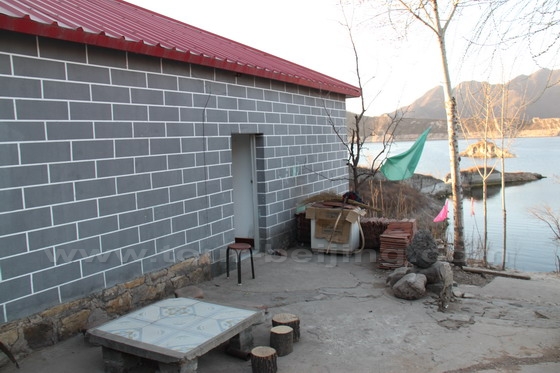
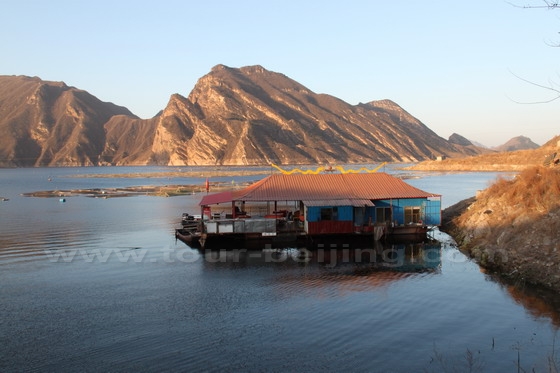
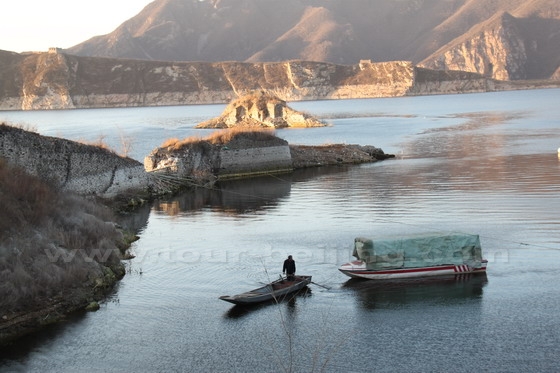
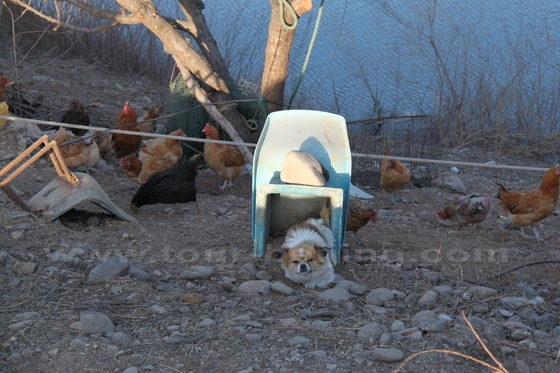
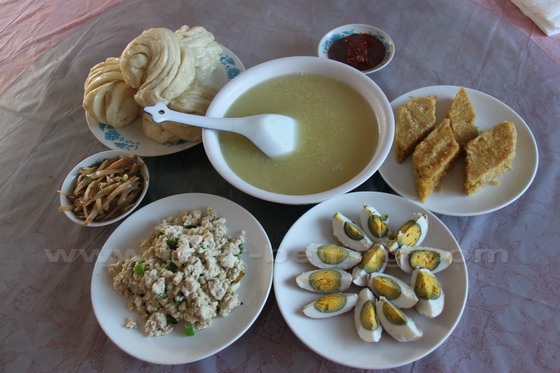
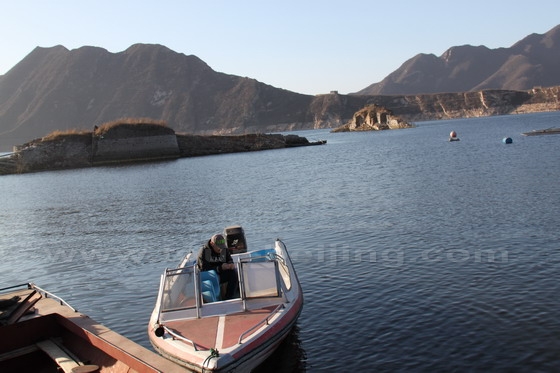
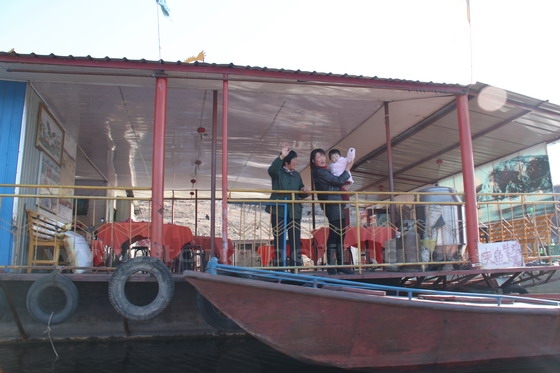
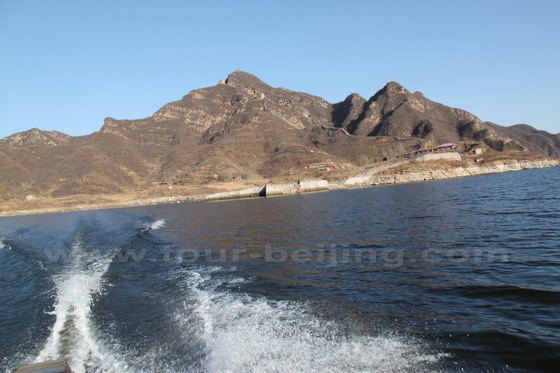
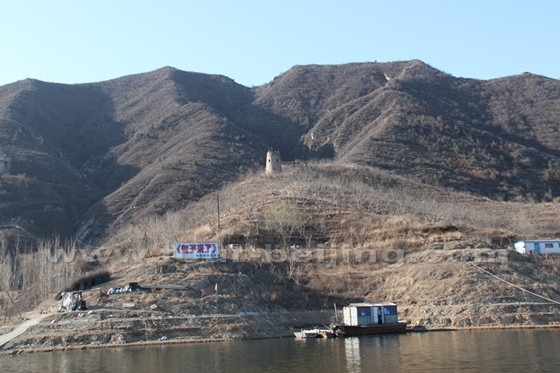
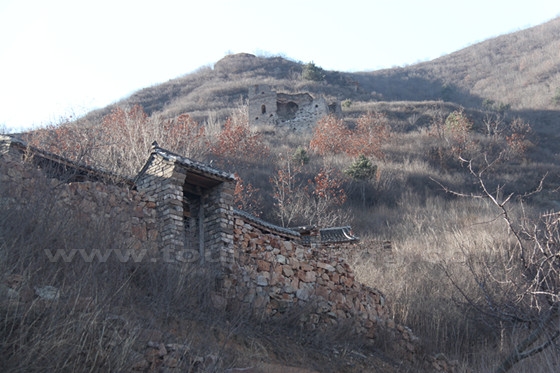
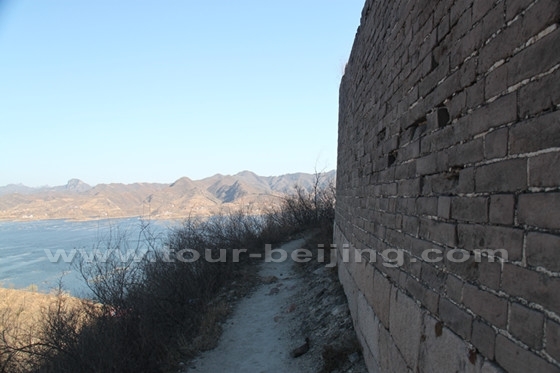
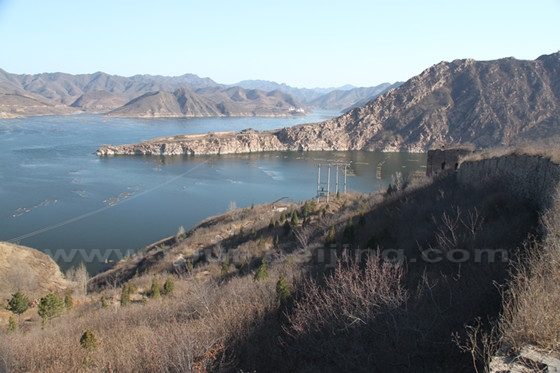
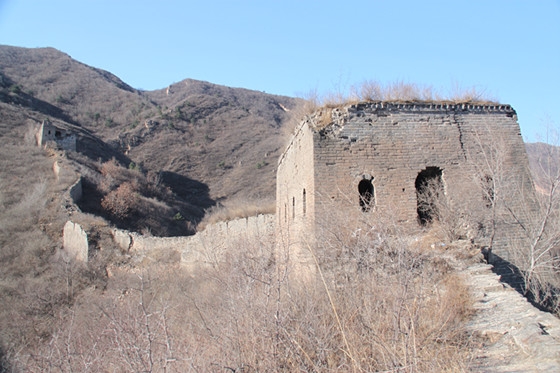
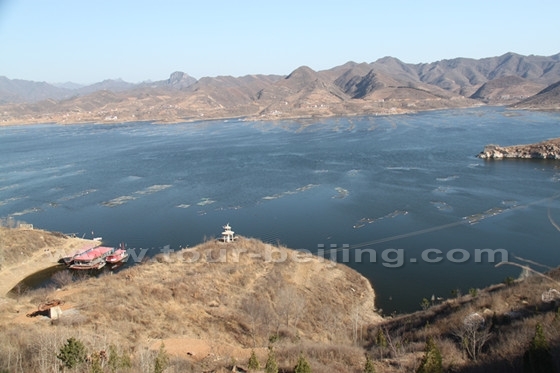
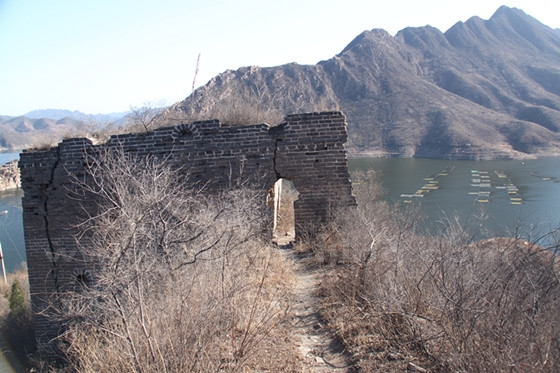
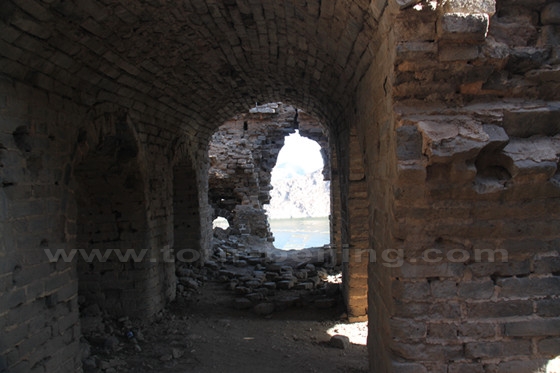
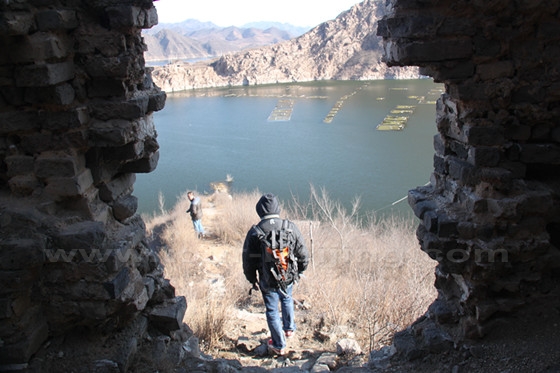
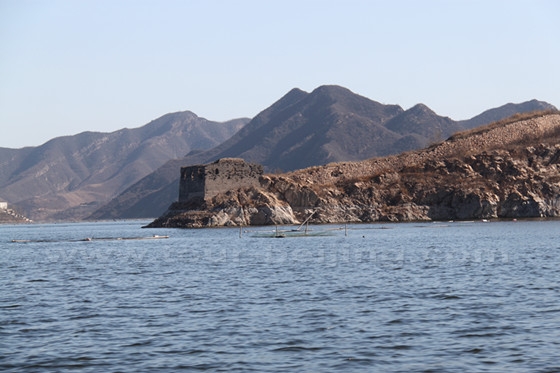
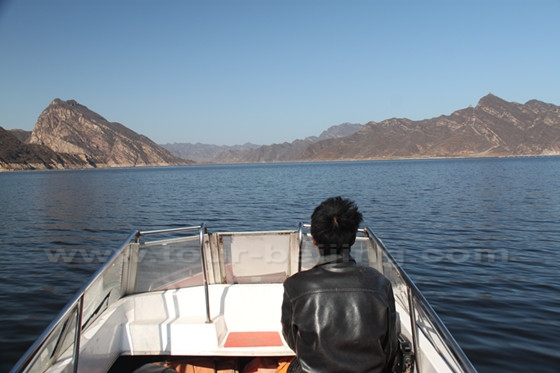
Dear Sirs:
Ni Hao Ma.
I have been reading and learning about the XiFengKou of the Great Wall and it’s significance in 1933 where brave chinese soldiers fought against overwhelming numbers and firepowers of the japanese. As I am a student and proponent of the chinese Big Saber of DaDao that was used to heroic status in this battle, I will be traveling to China this year 2012 to visit these historic sites of the Great Wall. I want to honor these brave souls who knowing the overwhelming odds fought to their death defending against the invaders.
As I do not know the geography of China or the Great Wall, I would like to know where I can obtain a map with both Chinese and English. I do not know how to read chinese so the English definitely would help me to plan my trip and to see these historic sites during my limited trip. I am planning to visit China in July or early August 2012 and hope you can offer some assistance.
Also, do you know of a teacher who teaches the use of the Dadao (Big Saber) in or around the Beijing area who would be willing to give me some abbreviated lessons during my visit to China? As a student of this historic weapon, I would like to see how this weapon was actually used and how I could learn from it.
By the way, I am an American of Chinese Decent, so I am discovering just now my lost chinese heritage. Xie Xie Ni for any help you can offer.
AL N. Leon
[email protected]
Honolulu, Hawaii 96815